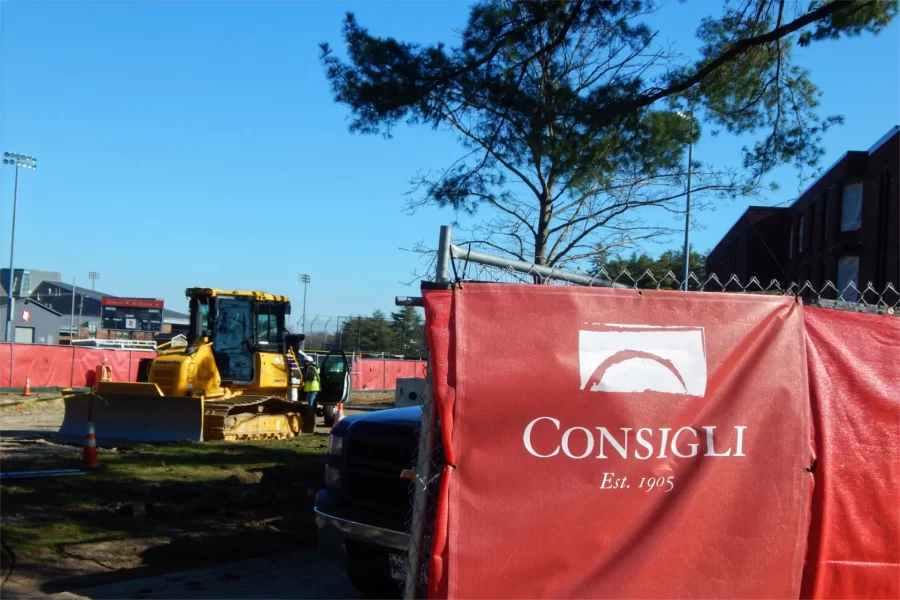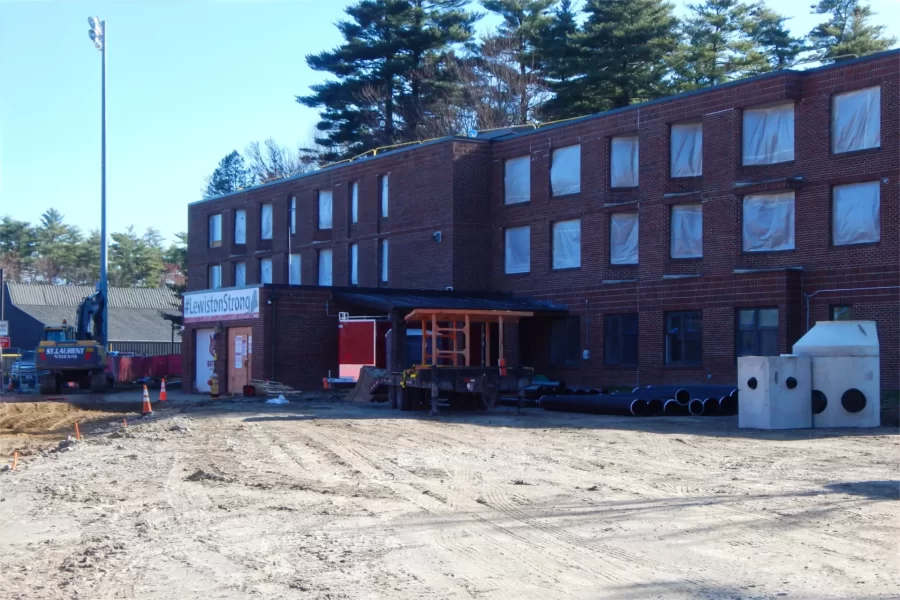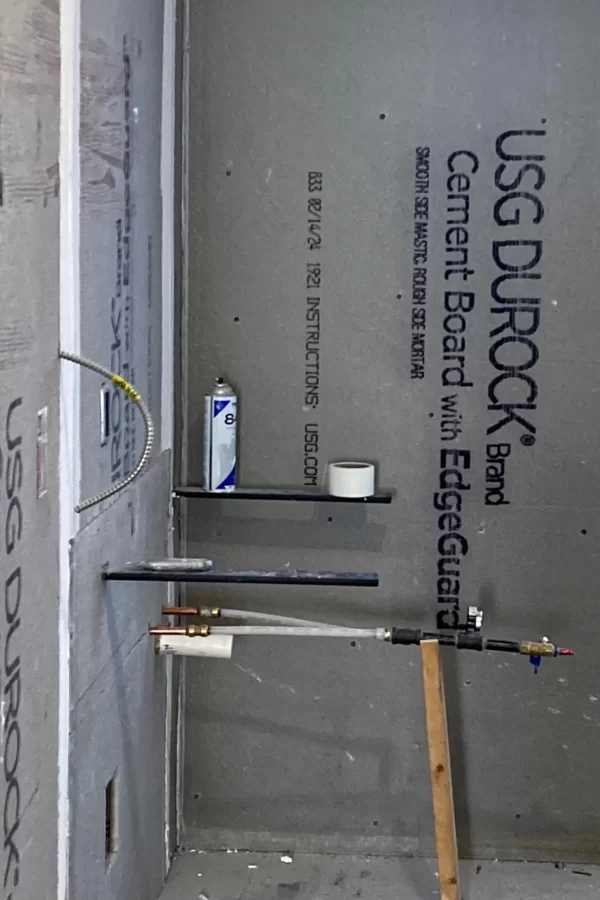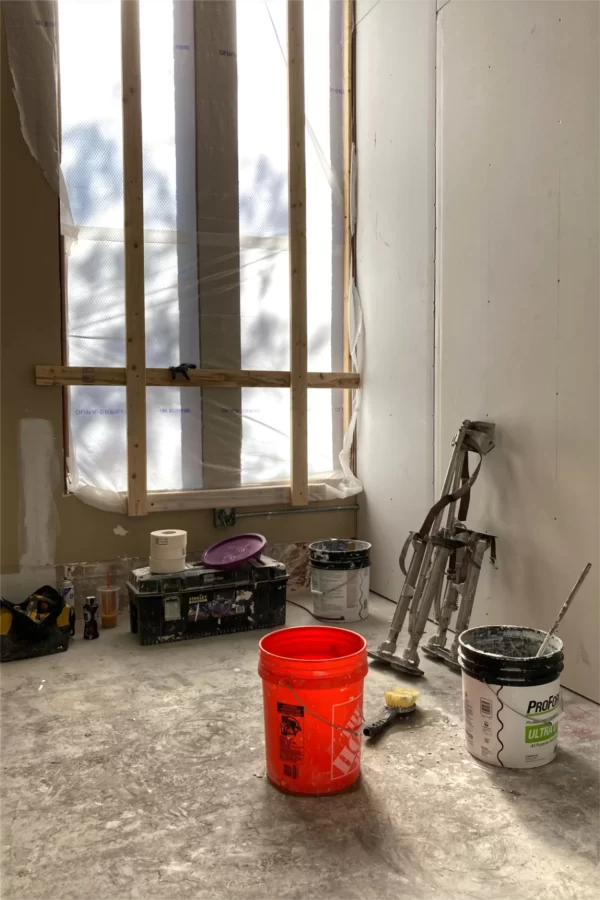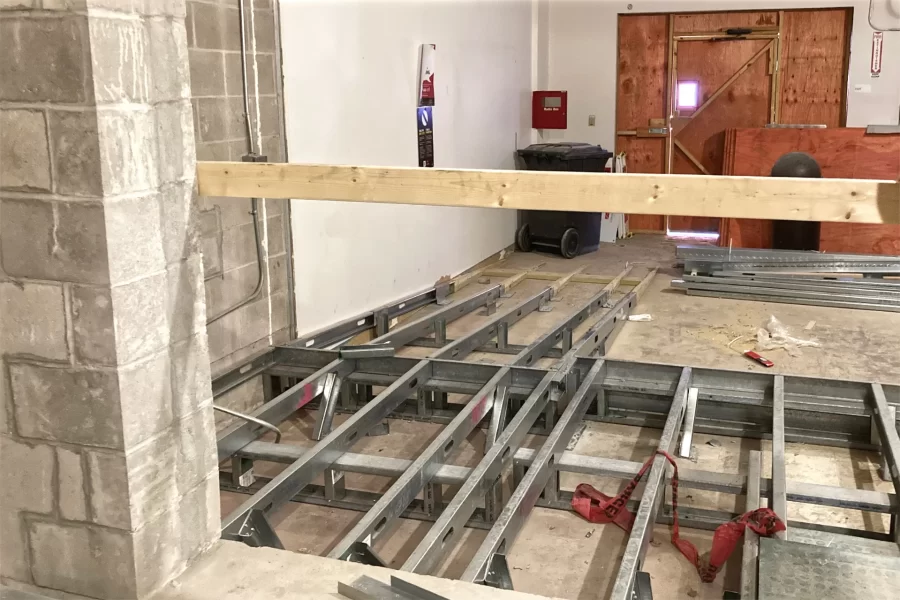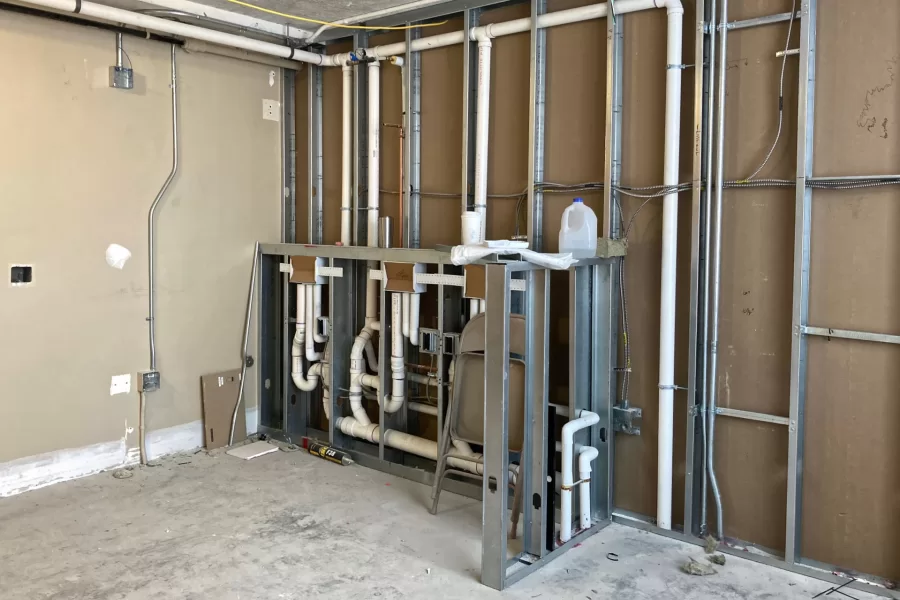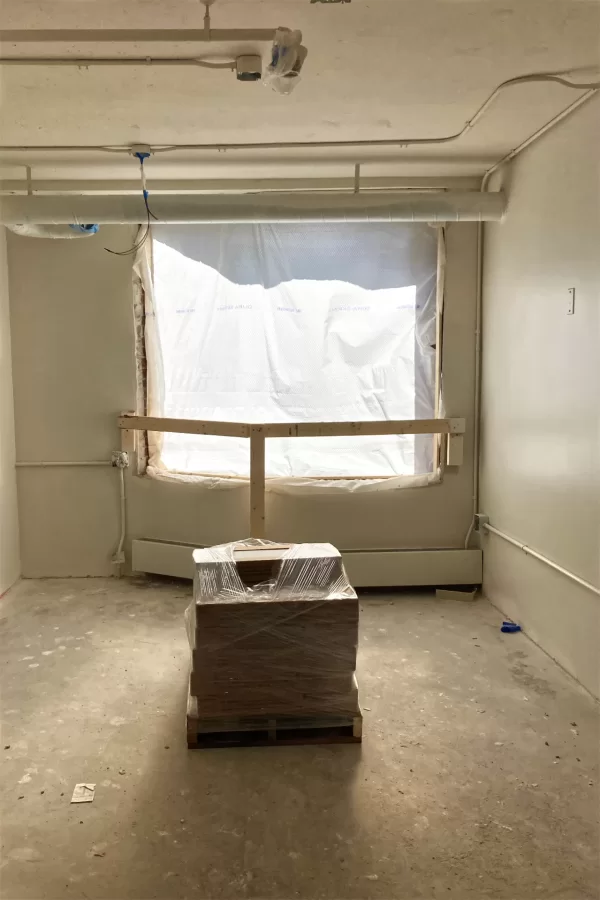
Now at the halfway mark, the conversion of a former convent into a new residence for Bates students is on schedule and within budget.
Most of the renovation action at 96 Campus Avenue is out of sight inside the building, but even so, the view from the street tells you more about the initiative’s progress nowadays than it would have a month ago.
For example, a certain blankness to the facade (similar to our first glance in the mirror each morning) indicates that most of the window units original to the 46-year-old building have been replaced with white plastic sheeting. Those plastic coverings, in turn, will be replaced by new permanent units by June.
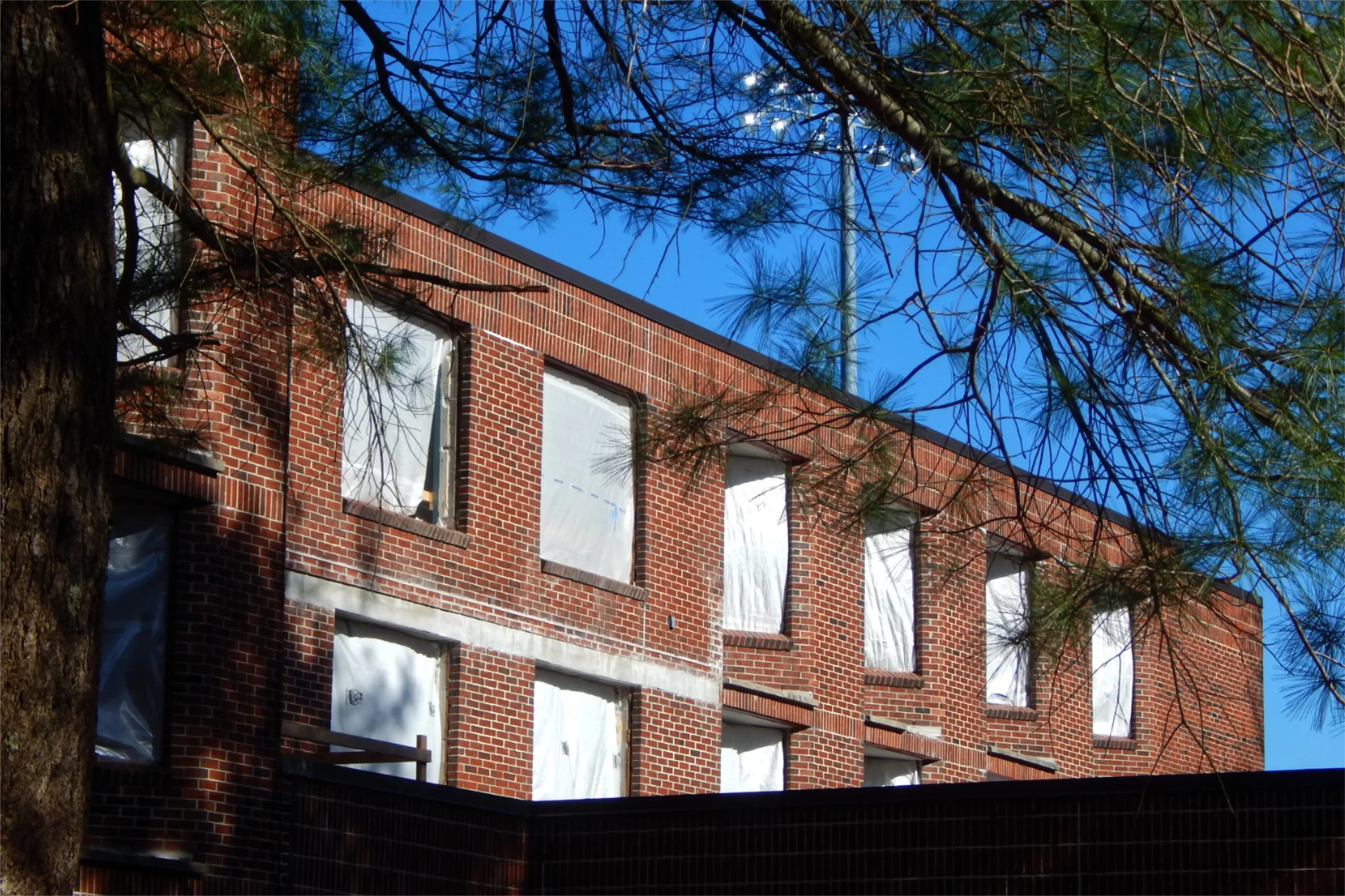
You’ll also see earth-moving equipment that wasn’t there before. At ground level, the entrance drive and parking lot have been stripped down to dirt and a shallow trench gouged out along the left-hand side, near a road used by Facility Services.
Once it’s been deepened to about 4 feet, the trench will be used to run new connections for water, storm drainage, and gas up to the building. The water pipe was slated for placement this week, and the gas and storm drainage next week.
Last week, meanwhile, a new sewer pipe was also installed. But that pipe follows the same course as the original line, 12 feet under.
Brian Lanoie, the Bates project manager in charge of the 96 Campus Avenue makeover, explained that the sewer replacement was achieved through a practice called “pipe-bursting.” You may think you know all about this technique from the episode when, in the innocence of youth, you flushed three bath towels down the toilet, but in fact the professionals’ method is a bit more sophisticated.
In pipe-bursting, a so-called bullet is pulled by a cable through the old pipe (in this case, made of PVC). The bullet’s diameter exceeds the pipe’s, so it fractures the pipe, making way for the replacement, which is drawn along behind the bullet. Ergo, only one pass is needed to dispose of the old pipe and put the new in place — and all without needing to dig a trench along the whole pipe run (although small digs are needed to situate the replacement pipe and bullet for installation).
In the case of the 96 Campus Avenue line, there was an especially good reason to avoid a deep trench: an electrical transformer on the ground near the sewer path. “The problem is that (the path) crosses the high-voltage lines that feed the transformer as well as other utilities under here,” Lanoie said.
“They didn’t want to risk compromising any of those utilities. One of the options that we talked about was relining the pipe already in place, but we decided that we really would rather have it replaced if at all possible.”
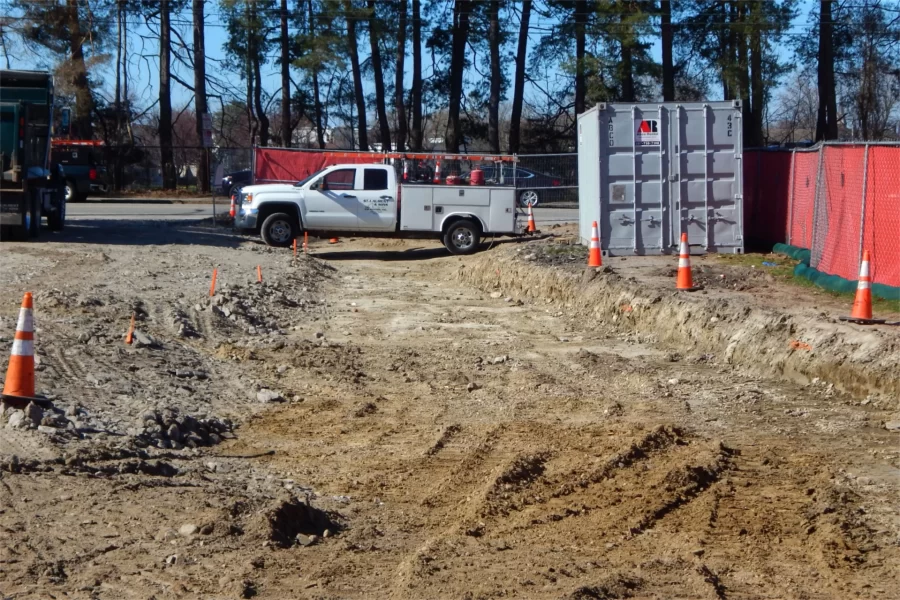
Something else that needs to happen before the parking lot and other hardscaping can be completed is the placement of large HVAC machines on the building’s roof. A crane and crew from a familiar source, Cote Corp. of Auburn, will do the heavy lifting, scheduled for May 10.
Cote will need to deliver the equipment before the parking lot is paved, as their heavy equipment could damage new asphalt.
The two rooftop machines, as well as some water heaters that are bound for the basement, have been in Cote’s hands for a while, says Lanoie. This has been a comfort in light of other projects — not just at Bates — that have been deranged because the delivery of crucial components was stalled by kinks in the supply chain.
Inside the building, the third and topmost level is the furthest along. In fact, with wall-boarding all but complete, painters have begun priming many of the residential rooms. At the same time, workers for the Paul White Co. of Portland are in the shower rooms waterproofing subfloors prior to tiling and installing the shower-stall bases, aka pans.
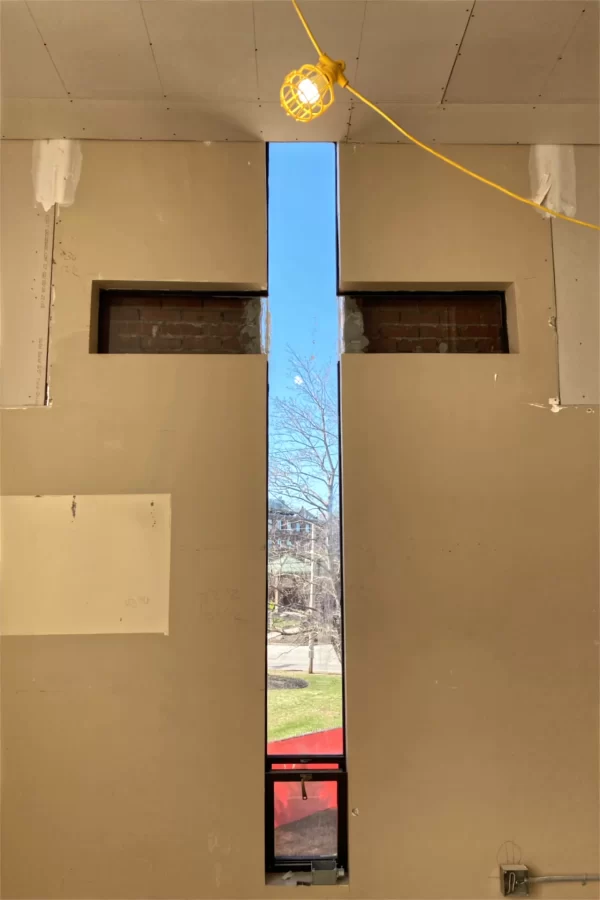
In the race among the floor levels toward completion, the second floor is still in second place. That’s by design, but it’s also true that the objectives on that level are more complex. The laundry room for student use is on that floor, necessitating a certain density of electrical and plumbing connections. (The apartment for the residence director, one story down, will have its own laundry facilities.)
The second level, too, was the location of the chapel used by the nuns of the Sisters of Charity order who were the building’s original occupants. Drywall installers have been busy subdividing that formerly open space into student quarters.
And what about the first floor? Simply because so many different building facilities and functions will be concentrated there, that level is the buzzingest part of the 96 Campus Avenue beehive. Lanoie told us that “every possible (building) trade is on site right now,” and there was evidence of nearly all of them on that one floor.
At one point, with designated walkways occupied by people doing actual work, we found ourselves twisting and turning cautiously through gaps in the metal wall framing to get where we were going. This was in a section of the first level, toward the back of the building, that’s both where the residence director’s apartment is being built and where utility feeds are routed upstairs from the basement.

The first floor is also the focus of project news. One new development is the decision, because of issues with the structural slab that supports much of the building, to build the custodial room on the first floor instead of the basement. “So now in the lower level, we have no program space at all. It’s a lot of spare rooms that will be used for something in the future, but really it’ll just be maintenance folks that will need to go down there.”
Finally, a way was found to add another single room to the first-floor layout near the Campus Avenue end of the building. That will raise the total capacity of the finished residence to 65 beds.
Can we talk? Campus Construction Update welcomes your questions and comments about current, past, prospective, and unlikely construction projects at Bates. With “Campus Construction” or “Is that what they call throwing in the towel?“ in the subject line, please send your thoughts to dhubley@bates.edu.
Doug Hubley is a writer and musician living in Portland, Maine.
